
Sometimes fanciful thoughts relax our minds by reminding us of whimsical, carefree times. And what could be more whimsical than riding a unicorn? If the unicorn is white, with a multi-colored tale, it is clearly a fantasy. But unicorns of other descriptions were once thought to be real.
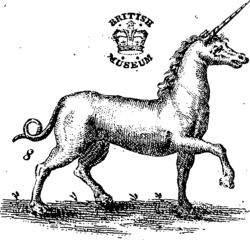
The unicorn, a mythical, magical beast sporting a single spiraling horn from the middle of its forehead, has a long history, in part because of the resemblance it bears to other creatures.
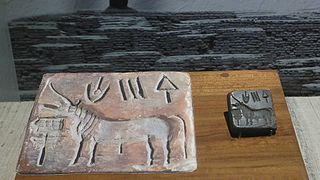
Cylinder seals discovered in the Indus River Valley depict a unicorn-like creature, probably the profile of an aroch, a species of wild cattle.
Ancient Greeks thought unicorns lived in India, perhaps due to descriptions of the Indian rhinoceros. Ctesias, a 4t century physician who served the king of Persia, transcribed reports he heard from Indian travelers. There are in India, Ctesias wrote, certain wild asses which are as large as horses, and larger. Their bodies are white, their heads dark red, and their eyes dark blue. They have a horn on the forehead which is about a foot and a half in length.
Pliny the Elder, a Roman author, described the unicorn as the fiercest animal, and it is said that it is impossible to capture one alive. It has the body of a horse, the head of a stag, the feet of an elephant, the tail of a boar, and a single black horn three feet long in the middle of its forehead. Its cry is a deep bellow.
Did Unicorns Board Noah’s Ark?
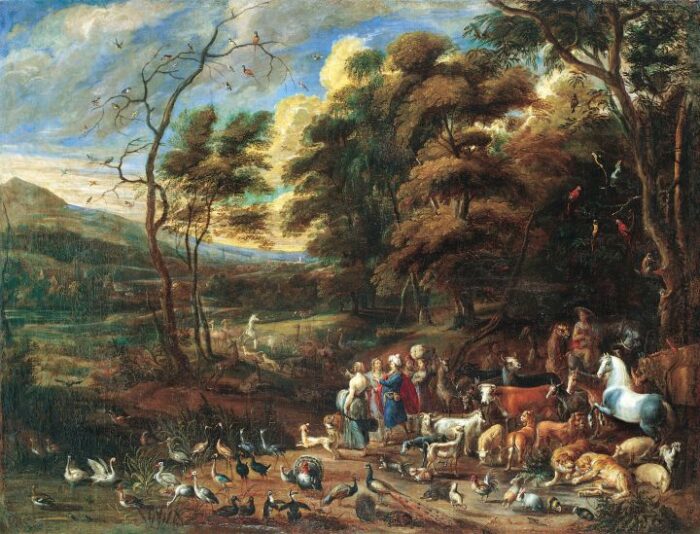
There are various stories about Noah’s efforts to bring unicorns onto the Ark in order to escape the great flood. One says the unicorns were too slow, and the ark sailed without them; another, that that the unicorns boarded the ark, but took up too much space, forcing Noah to evict them, and a third, popularized by the Irish Rovers in 1968, says the unicorns kept playing, and missed the boat.
The story found in Jewish Fairy Tales and Legends includes a giant called Og. When Noah called the animals together, he told them that all the ones who lay down could enter the Ark, but those that remained standing wouldn’t be allowed to board. The creatures presented themselves and entered, but Noah had a problem. He didn’t know where he could obtain a unicorn.
Og volunteered to get a unicorn if Noah would let him board the ark. But Og was a demon, so Noah refused to deal with him. Nevertheless, Og brought Noah a unicorn. Although the animal was huge, it lay down before Noah. The unicorn qualified to enter the Ark, butite was too big. Noah decided to tie the beast to the Ark with a rope attached to its horn, and feed it through a window. When the flood waters rose, the unicorn swam beside the ark. Og mounted the unicorn, and intercepted the unicorn’s food. Eventually, the Ark and everything attached to it reached dry land.
Healing Properties of Unicorn Horns
By the Middle Ages, unicorns had become magical creatures. In particular, unicorn horns could make poisonous water drinkable and cure disease. It was said, if you stirred a unicorn horn in your food, it would detect poison. A unicorn horn was, literally, worth a fortune, either in its entirety, or ground into a powder and injected to gain immunity from toxins.
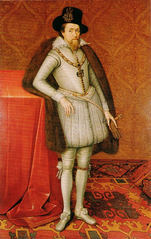
King James I of England purchased powdered unicorn horn, but didn’t know if he had the authentic product or an imposter. So, he added the powdered unicorn horn to a goblet of poison and ordered his servant to drink it. Alas, the servant died.
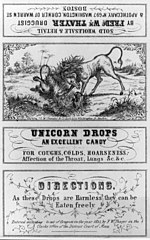
In the 17th century, London newspapers were filled with advertisements for medicines made from unicorn horns in both liquid and tablet form. The elixirs claimed to cure ulcers, scurvy, melancholy, and consumption, among other maladies.
Since unicorns are difficult to come by, entrepreneurs utilized horns from the oryx, a species of antelope or narwhals, a species of whale with a large ‘tusk,’ which is actually a protruding tooth.

Oryx Gazelle 
Pod of Narwhals
Next Week: How to Capture a Unicorn
🦄🦄🦄
Illustrations
Unicorn Illustration from A Description of Three Hundred Animals. 1753
Indus Seal – “Unicorn” Indian Museum. Kolkata. by Royroydeb.
Journey to Noah’s Ark by Lambert de Honda
James I of England by John de Critz
Unicorn Drops.
Oryx Gazelle by Charles J. Sharp.
Pod of Narwhals.
Gertrude Landa. “The Giant of the Flood.” Jewish Fairy Tales & Legends. Project Gutenberg. 2008.
Matt Simon. “Fantastically Wrong: The Weird, Kinda Perverted History of the Unicorn.” Wired. Feb. 4, 2015.

Sandra Wagner-Wright holds the doctoral degree in history and taught women’s and global history at the University of Hawai`i. Sandra travels for her research, most recently to Salem, Massachusetts, the setting of her new Salem Stories series. She also enjoys traveling for new experiences. Recent trips include Antarctica and a river cruise on the Rhine from Amsterdam to Basel.
Sandra particularly likes writing about strong women who make a difference. She lives in Hilo, Hawai`i with her family and writes a blog relating to history, travel, and the idiosyncrasies of life.

